Invisible teeth straightening for a healthy and beautiful smile
Ordoline aligner therapy is a modern, effective, and scientifically proven teeth straightening solution for [most] orthodontic cases. This includes even those that could previously only be treated with braces.
[Our goal is to help you achieve the smile you want while improving long-term oral health. With Ordoline’s advanced system, teeth straightening is comfortable, nearly invisible, and fits into your everyday life.]
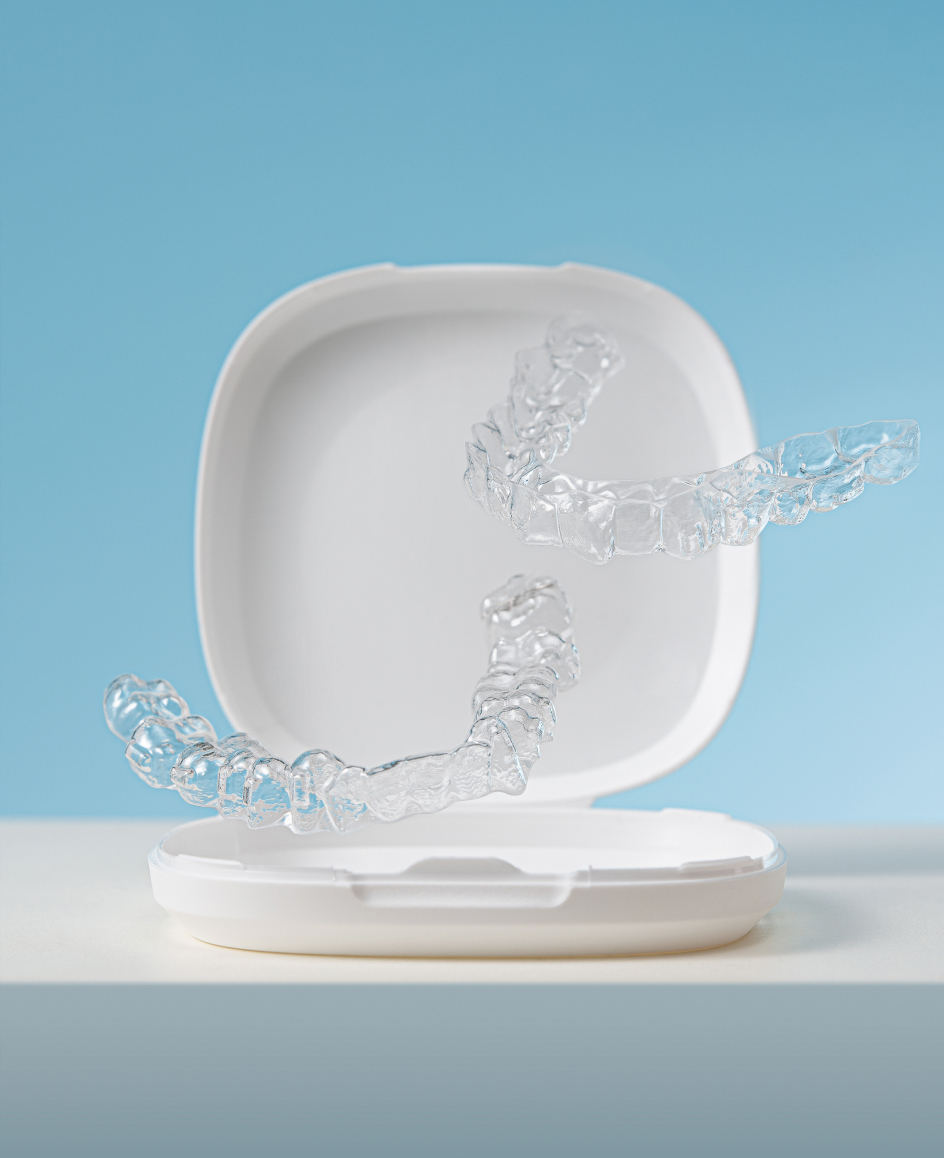
Why do people choose Ordoline? [Because we do more.]
Dominant brand aligners
Standard aligners
Clearness of aligners
Clearness of aligners
Aligner comfort
Aligner comfort
Treatment price
Treatment price
Treatment of difficult cases
Treatment of difficult cases
Additional treatment quality control
Additional treatment quality control
Support for your doctor
Support for your doctor
The aligners generations
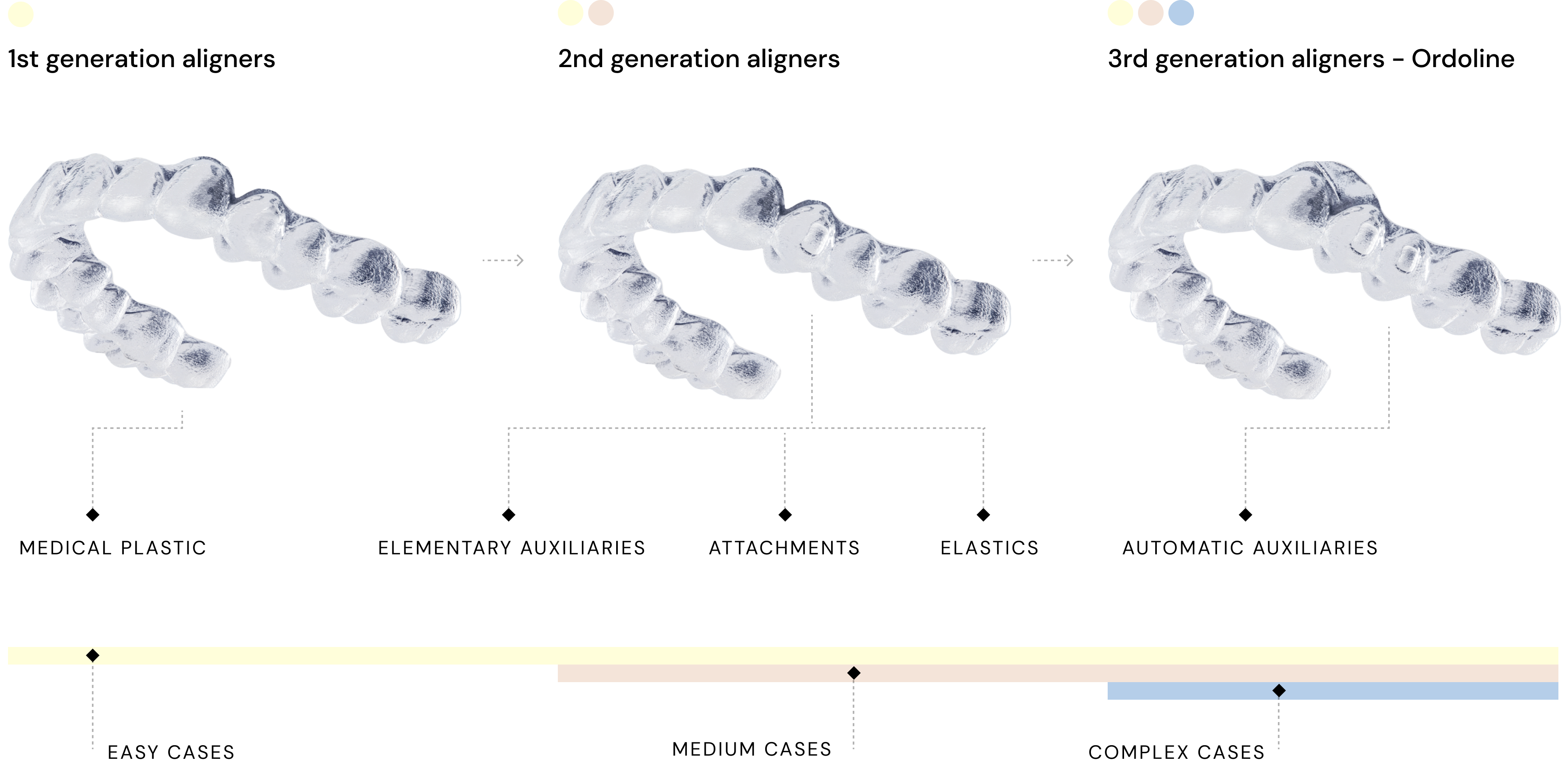
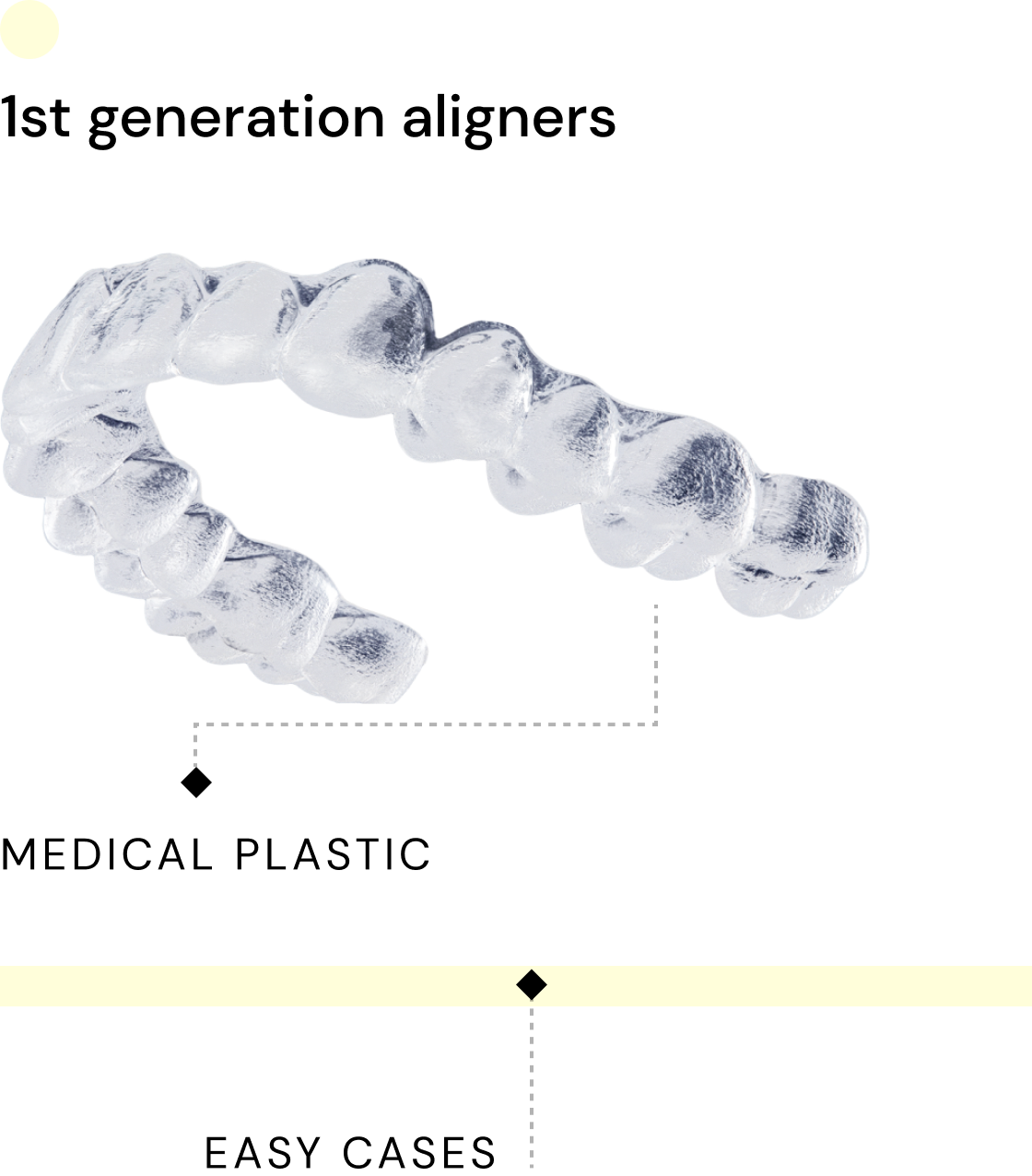
Additional orthodontic add-ons are not incorporated and teeth movements rely on the plastic on an aligner alone. Thus, only very limited treatment is possible and treatment results are difficult to predict.
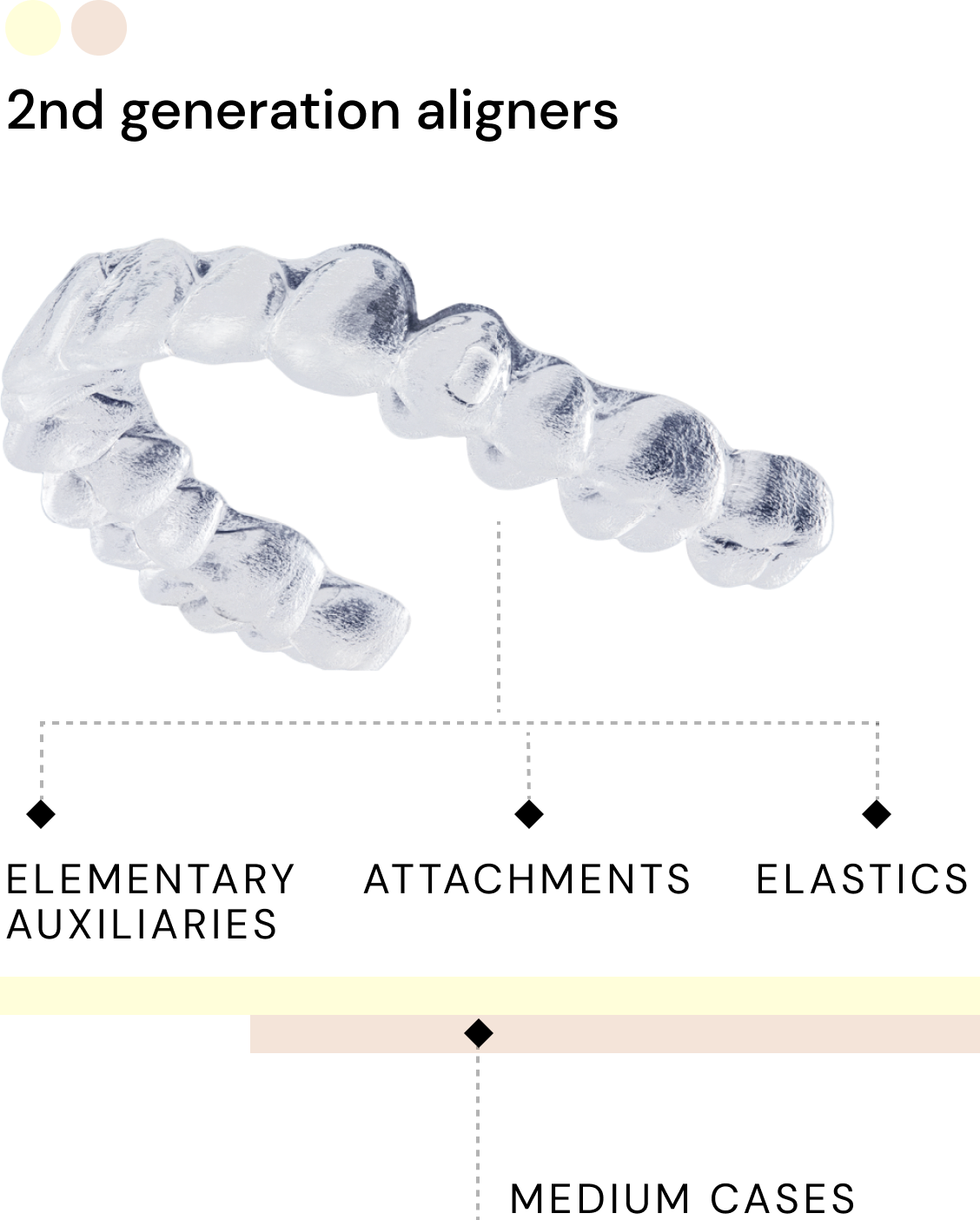
Elementary orthodontic add-ons such as attachments are used to assist treatment and facilitate teeth movements making treatment more predictable.

A broad range of orthodontic add-ons, such as pre-activation points, elastic, bite ramps are automatically integrated into the digital treatment plan which together with scientifically proven treatment protocols makes treatment accurate and predictable, successfully treating easy to difficult cases.
Successful treatment [is the result of four key factors working together:]
-
[Your doctor’s expertise]
-
[A precise treatment plan]
-
[High-quality aligners]
-
Your compliance
Together with partner doctors, we create high-quality individual treatment plans that integrate all orthodontic auxiliaries required for [predictable] treatment.
[Ordoline aligners are comfortable, durable, and made to follow your treatment plan exactly — moving your teeth step by step toward the final result.]
[Ordoline partner doctors are trained and certified to deliver aligner treatment safely and effectively. They verify your treatment plan, apply necessary add-ons, and guide you throughout the process.]
[To get the best outcome, wear your aligners for 22 hours a day. Your consistency is essential to the success of the treatment.]
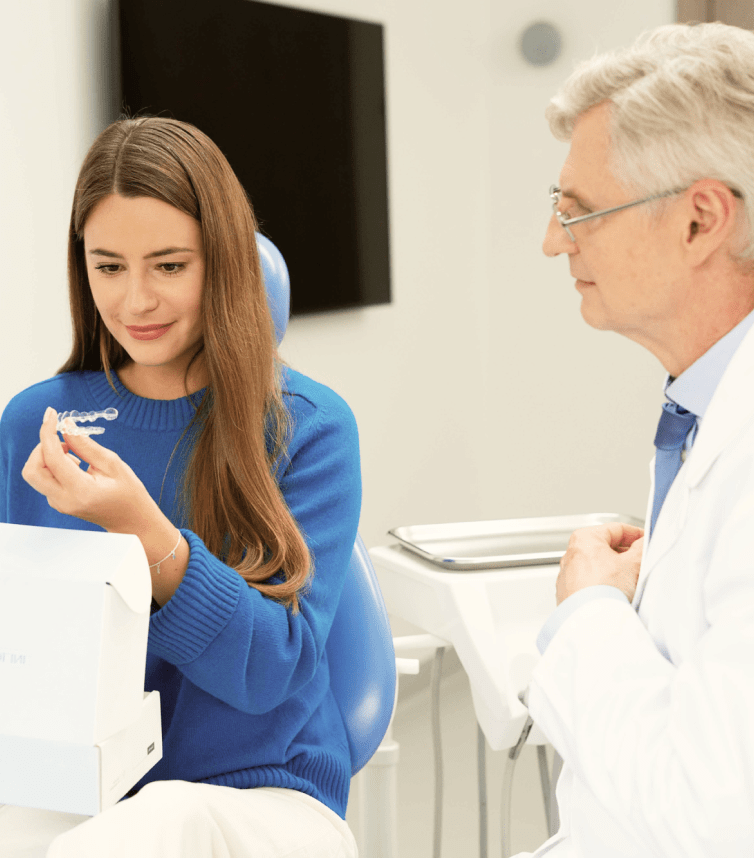
We achieve the desired results through close collaboration with your doctor
[At Ordoline, we know that successful treatment starts with your doctor — not just the aligners. That’s why we work closely with experienced, certified doctors who take full responsibility for your diagnosis, treatment plan, and overall care.]
[While your doctor leads the process, Ordoline provides continuous support: from precise aligner sets and treatment guides to real-time clinical assistance.]
[Think of it like this: your doctor is the pilot — we’re the co-pilot, making sure the journey to your new smile is smooth, safe, and successful.]
History of teeth straightening
[Shaping the future of orthodontics]
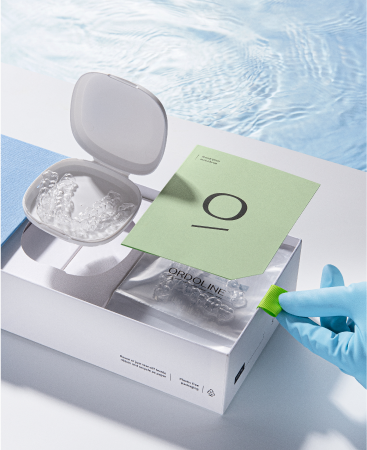
[At Ordoline, innovation drives everything we do. By combining expert knowledge with advanced digital technology, we deliver more accurate and predictable treatment — starting from your very first visit.
Our team uses state-of-the-art CAD systems to create personalized digital plans that guide your aligners and solve even the most complex orthodontic cases. With Ordoline, you’re not just getting aligners — you’re getting the future of orthodontic care.]








